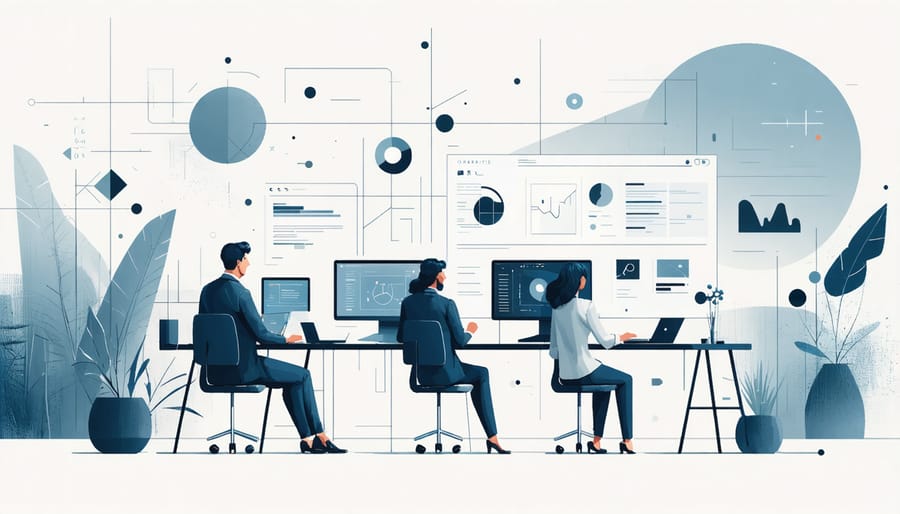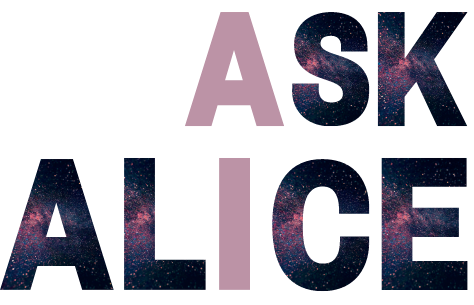AI-driven development is fundamentally reshaping organizational dynamics across industries, transforming how companies build, deploy, and maintain software solutions. From automated code generation to intelligent testing frameworks, artificial intelligence is accelerating development cycles while simultaneously reducing human error and technical debt.
Today’s developers leverage AI to automate repetitive tasks, predict potential bugs before deployment, and generate code snippets in real-time—all while maintaining high quality standards. This technological revolution isn’t just about coding efficiency; it’s creating a new paradigm where machines and humans collaborate to deliver superior software solutions.
The impact extends beyond just writing code. AI systems now assist in requirements analysis, architecture design, and even user experience optimization, fundamentally changing how development teams operate. For organizations looking to stay competitive, understanding and implementing AI-driven development practices isn’t just an option—it’s becoming a critical business imperative.
As we navigate this transformation, the key lies in balancing automation with human expertise, ensuring that AI augments rather than replaces human creativity and problem-solving capabilities.

How AI is Revolutionizing Talent Acquisition and Development
Predictive Analytics in Hiring
Modern hiring practices have been revolutionized by predictive analytics capabilities, which help organizations make more informed decisions about potential candidates. By analyzing vast amounts of historical hiring data, AI systems can identify patterns that correlate with successful employees and predict which candidates are most likely to excel in specific roles.
These AI-powered systems evaluate multiple factors simultaneously, including work experience, skills, educational background, and even subtle indicators like communication style and problem-solving approach. For example, AI can analyze video interviews to assess candidate personality traits, engagement levels, and cultural fit through facial expressions and speech patterns.
The technology goes beyond traditional resume screening by considering non-traditional indicators of success. It might discover that candidates from diverse educational backgrounds perform better in certain roles or that specific combinations of soft skills are better predictors of long-term success than traditional qualifications.
Companies using these tools report significant improvements in hire quality, reduced turnover rates, and decreased time-to-hire metrics. However, it’s crucial to regularly audit these systems to ensure they maintain fairness and avoid unintended bias in the selection process.
Personalized Learning Paths
AI-driven personalized learning paths are revolutionizing how organizations develop their employees’ skills and capabilities. These intelligent systems analyze individual performance data, learning preferences, career goals, and skill gaps to create tailored development programs that maximize learning effectiveness.
The technology works by continuously monitoring an employee’s progress and adapting the curriculum in real-time. For example, if a developer shows strong proficiency in Python but struggles with cloud architecture concepts, the AI system automatically adjusts the learning path to provide more cloud-related content while maintaining an appropriate challenge level for coding exercises.
These personalized pathways incorporate various learning formats, from interactive tutorials and video courses to hands-on projects and peer learning opportunities. The AI algorithms also factor in learning pace, preferred times for study, and even personal interests to ensure higher engagement and knowledge retention.
Organizations implementing AI-driven learning paths report significant improvements in skill acquisition rates and employee satisfaction. The system’s ability to predict skill requirements based on industry trends helps prepare workers for future roles while maintaining alignment with organizational objectives.
Real-Time Performance Management Systems

Automated Skill Gap Analysis
AI-driven development has revolutionized how organizations identify and address skill gaps within their teams. Modern AI systems analyze vast amounts of data from multiple sources, including project performance metrics, employee assessments, and industry trends, to create comprehensive skill profiles for each team member.
These intelligent systems continuously monitor employee performance and compare it against established benchmarks and emerging industry requirements. By processing this information, AI can predict future skill needs and identify areas where team members might need additional training or development.
For example, when a development team starts adopting new technologies or methodologies, the AI system can automatically flag team members who might need upskilling in these areas. It does this by analyzing their current skill set, past learning patterns, and project requirements.
The analysis goes beyond simple skill matching. AI algorithms can identify subtle patterns in how developers work, their problem-solving approaches, and their collaboration styles. This deeper understanding helps create personalized learning paths that align with both individual learning preferences and organizational needs.
Real-time feedback loops enable continuous assessment and adjustment of learning recommendations. As developers complete training modules or work on projects, the AI system updates their skill profiles and adjusts future recommendations accordingly. This dynamic approach ensures that skill development stays relevant and practical.
Organizations can also use this data to make informed decisions about team composition, project assignments, and hiring strategies, creating a more efficient and effective development ecosystem.
Dynamic Feedback Mechanisms
Dynamic feedback mechanisms powered by AI are rapidly revolutionizing business processes by providing real-time insights into development progress and performance. These systems continuously monitor developers’ coding patterns, project timelines, and quality metrics to offer instant, personalized feedback that helps improve productivity and code quality.
Using machine learning algorithms, these feedback systems can identify potential bottlenecks, suggest optimization opportunities, and predict possible issues before they become problems. For instance, when a developer writes code, the AI can immediately flag potential security vulnerabilities, suggest more efficient alternatives, or highlight inconsistencies with team coding standards.
The real power of these mechanisms lies in their ability to learn and adapt. As developers interact with the system, it becomes more attuned to individual coding styles and team preferences. This creates a virtuous cycle where the feedback becomes increasingly relevant and valuable over time.
These systems also provide valuable insights at the team level, helping managers understand productivity patterns, resource allocation needs, and areas where additional training might be beneficial. By combining individual and team-level analytics, organizations can make data-driven decisions about their development processes and continuously improve their workflows.
Popular tools like GitHub Copilot and Amazon CodeGuru demonstrate how AI-powered feedback can seamlessly integrate into existing development environments, making it easier for teams to adopt and benefit from these advances.

AI-Driven Career Path Optimization
Predictive Career Mapping
AI-powered predictive career mapping is revolutionizing how organizations and individuals plan professional growth trajectories. By analyzing vast amounts of career progression data, work patterns, and industry trends, AI systems can now forecast potential career paths with remarkable accuracy.
These intelligent systems examine multiple factors including skills development, market demands, and emerging roles to suggest personalized career opportunities. For instance, if a software developer regularly works with data analytics tools, the AI might recommend transitioning into a machine learning specialist role based on their skill overlap and market growth predictions.
Organizations are using these tools to create dynamic career development programs that adapt to both employee aspirations and business needs. The AI analyzes performance metrics, learning patterns, and industry developments to suggest targeted training programs and potential role transitions within the company.
What makes predictive career mapping particularly powerful is its ability to identify skills gaps and recommend specific learning paths to bridge them. The system might notice that a project manager frequently handles AI implementation projects and suggest relevant technical certifications to enhance their expertise.
This technology also helps organizations prepare for future talent needs by forecasting which roles will become critical in the coming years, allowing them to develop internal talent proactively rather than relying solely on external hiring.
Smart Succession Planning
In today’s fast-paced business environment, AI is revolutionizing how organizations identify and develop their future leaders. Modern succession planning platforms use sophisticated algorithms to analyze employee performance data, skills matrices, and leadership potential indicators across the entire workforce. These systems go beyond traditional metrics, incorporating factors like communication patterns, problem-solving abilities, and adaptability to change.
AI-powered tools can predict leadership potential by analyzing various data points, including project outcomes, peer feedback, and learning agility. For example, natural language processing examines written communications and presentation styles to identify individuals who demonstrate strong leadership characteristics. Machine learning algorithms can spot emerging leaders by recognizing patterns in behavior and performance that human observers might miss.
These systems also create personalized development paths for identified candidates, automatically suggesting relevant training programs, mentorship opportunities, and stretch assignments. Real-time analytics track progress and adjust recommendations based on performance and organizational needs.
Organizations using AI for succession planning report more diverse leadership pipelines and better retention of high-potential employees. The technology helps eliminate unconscious bias in the selection process and ensures a more objective approach to identifying tomorrow’s leaders. This data-driven method of talent development creates a more robust and sustainable leadership pipeline while reducing the risks associated with unexpected departures in key positions.
Implementation Challenges and Solutions
While AI-driven development offers tremendous potential, organizations often face several key challenges during implementation. One common obstacle is resistance to change from employees who fear AI might replace their jobs. Addressing this requires clear communication about how AI augments human capabilities rather than replaces them, coupled with comprehensive training programs that help employees adapt to new technologies.
Data quality and integration issues present another significant hurdle. Many organizations struggle with fragmented or inconsistent data across different systems, making it difficult to train AI models effectively. The solution lies in establishing robust data governance frameworks and investing in data cleaning and standardization processes before implementing AI solutions.
Technical expertise gaps often slow down AI adoption. Organizations frequently lack in-house talent with the necessary skills to implement and maintain AI systems. This can be addressed through strategic hiring, partnerships with AI solution providers, and investing in upskilling existing staff through specialized training programs.
Budget constraints and ROI concerns also pose challenges, especially for smaller organizations. To overcome this, companies should start with smaller, pilot projects that demonstrate clear value before scaling up. This approach helps build confidence and secure stakeholder buy-in for larger implementations.
Ensuring ethical AI implementation and compliance with regulations remains a critical challenge. Organizations must develop clear guidelines for AI use, ensure transparency in decision-making processes, and regularly audit their AI systems for bias. Establishing an AI governance framework and staying updated with evolving regulations helps maintain compliance while building trust among stakeholders.
As we look toward the future of AI-driven development, it’s clear that artificial intelligence will continue to revolutionize how organizations approach workforce development and talent management. The integration of AI technologies isn’t just a trend – it’s becoming a fundamental necessity for businesses aiming to stay competitive in an increasingly digital world.
The key to successful implementation lies in striking the right balance between human expertise and AI capabilities. Organizations that embrace AI while maintaining a human-centric approach will be best positioned to thrive. This means using AI to augment human decision-making rather than replace it entirely, and focusing on upskilling employees to work alongside AI systems effectively.
To get started with AI-driven development in your organization, consider these actionable steps:
1. Begin with small, targeted pilot programs to test AI implementation
2. Invest in employee training to build AI literacy across your workforce
3. Establish clear metrics to measure the impact of AI initiatives
4. Develop ethical guidelines for AI use in talent development
5. Create feedback loops to continuously improve AI systems
Remember that successful AI implementation is an iterative process. Start small, learn from early experiences, and gradually expand your AI initiatives as you build confidence and capability. The future of workforce development will belong to organizations that can effectively combine human insight with AI-powered efficiency, creating more dynamic, adaptive, and productive work environments.
Stay informed about emerging AI technologies and best practices, but always prioritize solutions that align with your organization’s specific needs and culture. The goal isn’t to implement AI for its own sake, but to use it as a tool for creating meaningful improvements in how we develop and manage talent.

